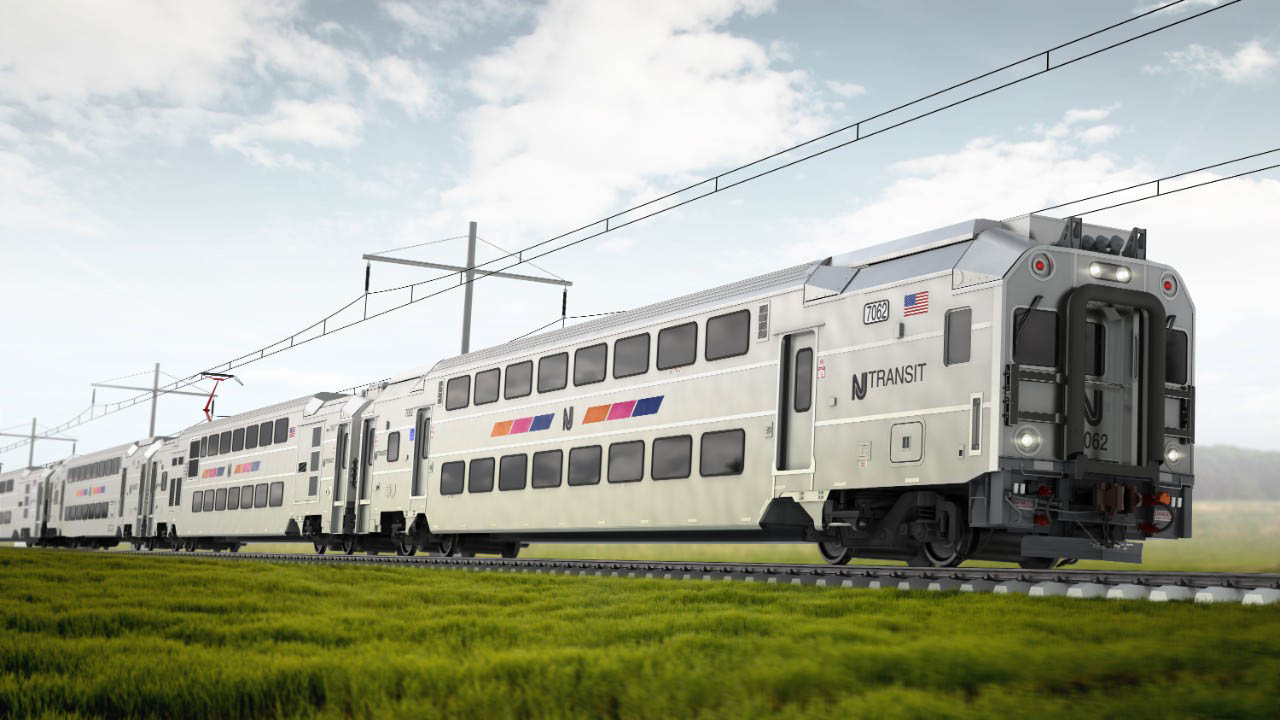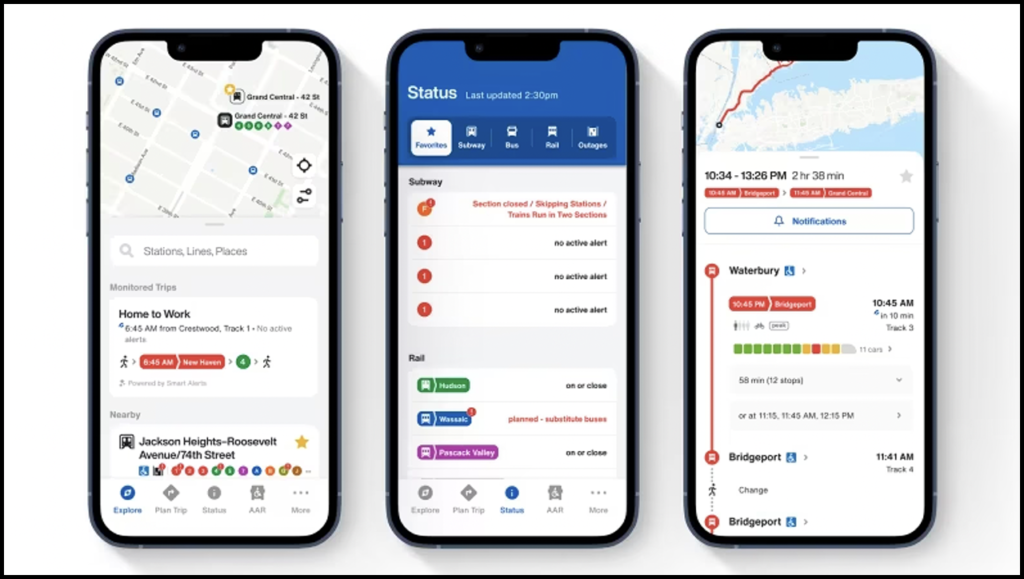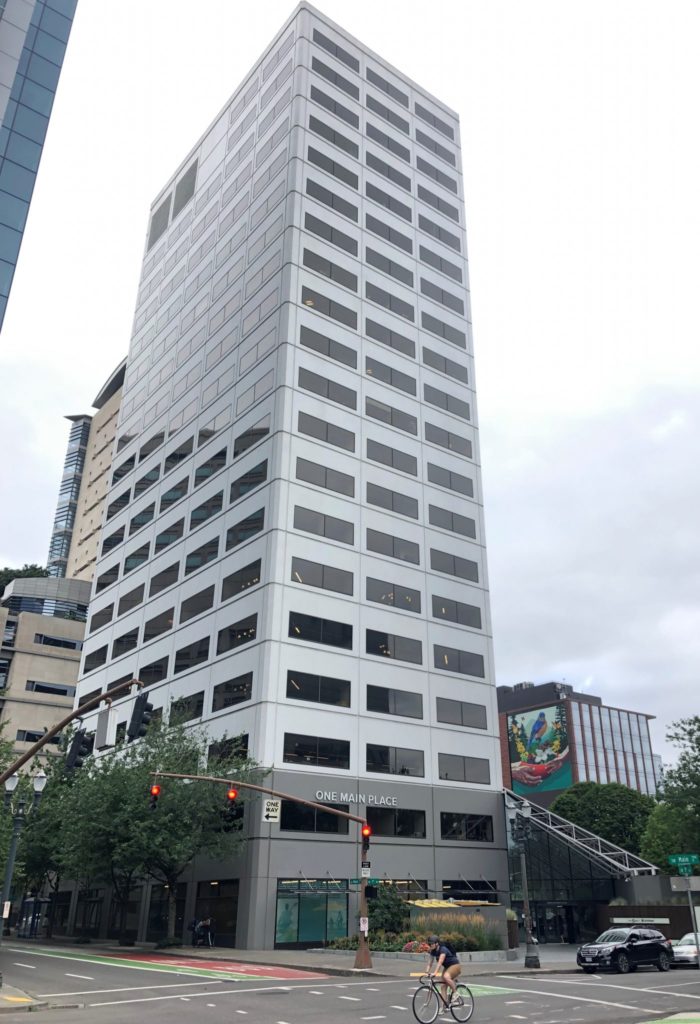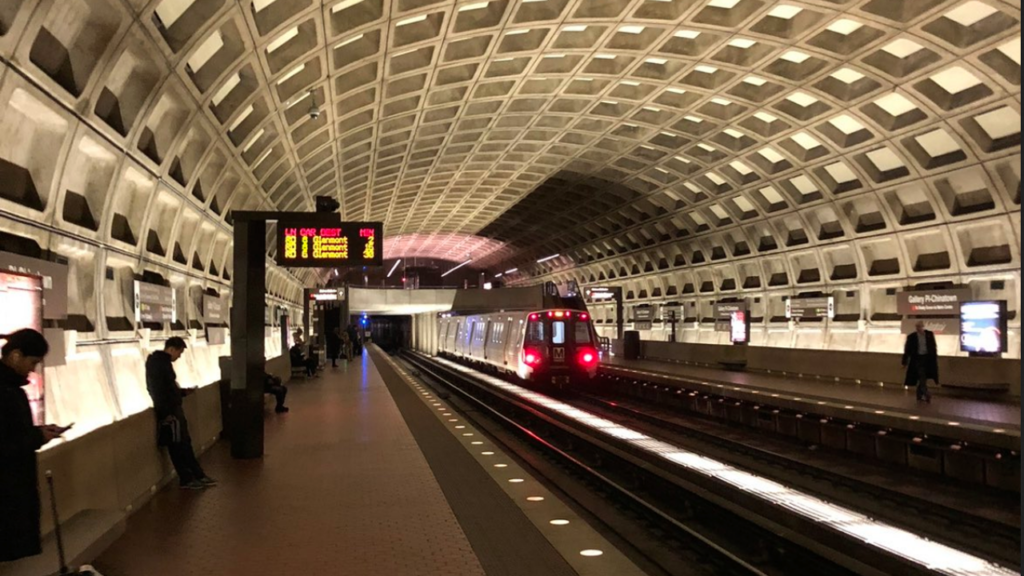
Transit Briefs: Amtrak/NJT, NYMTA, TriMet, WMATA
Written by Marybeth Luczak, Executive Editor
The New Jersey Herald on Aug. 8 reported that New Jersey Rep. Josh Gottheimer, U.S. Rep. Matt Cartwright (D-Pa.) and Amtrak officials visited the future Andover, N.J., station site, to which New Jersey Transit will run commuter rail service and from which Amtrak will operate intercity passenger rail service to Scranton, Pa.
Amtrak and New Jersey Transit’s (NJT) passenger rail service project between Andover, N.J., and Scranton, Pa., is advancing. Also, New York Metropolitan Transportation Authority (MTA) launches an all-in-one mobile app for trip planning and service information; Tri-County Metropolitan Transportation District of Oregon (TriMet) leases a new office space; and the latest Washington Metrorail Safety Commission report highlights Washington Metropolitan Area Transit Authority (WMATA) missteps.
Amtrak / NJT
The New Jersey Herald on Aug. 8 reported that New Jersey Rep. Josh Gottheimer, U.S. Rep. Matt Cartwright (D-Pa.) and Amtrak officials visited the future Andover, N.J., station site, to which New Jersey Transit will run commuter rail service and from which Amtrak will operate intercity passenger rail service to Scranton, Pa.
“Building the station and bringing rail service to Andover is well underway,” according to the newspaper, which noted that some woods have been cleared and “gravel railbed” is down. “The rest of the route, which follows the Lackawanna Cutoff to the Delaware River where it picks up existing railroad tracks, is on track for final federal approval.”
NJT’s portion of the project is an extension “from Netcong with the branch that goes through Hopatcong and through the Roseville Tunnel to the station,” the paper said. “Work is underway to shorten the tunnel to meet federal standards.” The tunnel, at its current length, would require ventilation.
According to Cartwright, the extension of passenger rail service into Pennsylvania is “still a few years away” and will provide tourism opportunities.
The Netcong-to-Andover link includes 8,000 feet of new track, and “much of the route west of the Andover station needs new roadbed” and track, the newspaper reported. “But there are also two long, concrete viaducts—one over the Paulins Kill River near Hainesburg, and the other crossing the Delaware River near Columbia, where the cutoff joins currently active railroad lines.”
Amtrak’s Corridor Vision plan has found that expanding service to Scranton “will generate about $84 million in annual economic activity,” according to the New Jersey Herald. “That is ongoing activity. Building the link is projected to be a one-time, $2.9 billion cost.”
New York MTA

The new all-in-one MTA app is now available. In BETA testing, it allows users to:
- Plan a trip to see recommended routes and check schedules for subways, buses, Long Island Rail Road, Metro-North Railroad, PATH and AirTrain.
- Get service alerts and see planned and unplanned service changes and best ways to get around.
- Save favorite routes and stops for quick viewing of arrival times.
- Track bus service to see where a bus is located, check when it will arrive, and follow it throughout its trip, including instant information on how many stops and minutes away the bus is.
- See real-time on-board crowding for railroads.
- Book Access-A-Ride trips, find pick-up and drop-off times for trips, and view trip history.
- See elevator and escalator outages at stations throughout the subway system.
- Opt-in to sharing location data and receive “smart,” real-time, location-based notifications for their individual journey.
Also, an improved search function makes it easier to see which results are MTA stations (and the services offered there), according to MTA. “Dynamic strip maps“ and station views indicate the service that is running at any given time.
The app was co-developed with Axon Vibe, which is described as a “smart mobility platform“ provider and former winner of MTA’s Transit Tech Lab accelerator. MTA reported that it will receive the app’s aggregated data “to better understand ridership and mobility patterns around the New York metropolitan area,” and to “assist with improving transit operations to meet the needs of customers and developing innovative tools to help make it easier for riders to plan for transit and reduce greenhouse gas emissions.” This effort, MTA added, is supported by the New York State Energy Research and Development Authority.
Riders can now sign up to access the app; downloads will be available via the Apple App Store and Google Play Store later this year. MTA noted that its older app, MYmta, will be automatically updated on a mobile device if it is already installed.
“If we want more customers to use public transit, providing travel tools that are easy and intuitive is key,” MTA acting Chief Customer Officer Shanifah Rieara said during the Aug. 8 app unveiling. “The new MTA app accomplishes just that, connecting riders to the information they need in one or two taps.”
TriMet

TriMet has moved its Administrative Headquarters to One Main Place (101 Southwest Main Street) in downtown Portland. The 10-year lease includes 95,000 square feet of office space on six floors of the 20-story tower. About 275 people, nearly half of the agency’s 600 non-union employees, report to One Main Place at least one day per week under a revised telework policy that brought administrative workers back to the office in January 2023. Workgroups that report regularly to the office include Engineering, Construction and Planning; Facilities Management; Finance, Labor Relations and Human Resources; Legal Services; Public Affairs; and Inclusion, Diversity, Equity and Access. The General Manager, Chief Operating Officer and members of the executive leadership team also have offices there.
TriMet in late 2021 negotiated terms for the lease agreement, which the Board approved in 2022. Its total investment will be about $33 million, according to the agency.
TriMet previously leased more than 50,000 square feet at Harrison Square, an office building about a half-mile south of One Main Place. The 10-year agreement for that property expired in June. If TriMet had remained there, it would have been responsible for a much larger financial obligation under a longer lease term, according to the agency.
The new building is located near the Hawthorne Bridgehead. One of the city’s first Rose Lanes, installed in 2019 to help speed up buses traveling into downtown, leads to a bus stop right outside. Lines 6-ML King Jr Blvd, 10-Harold and 14-Hawthorne arrive there regularly each day. Hundreds of buses can be accessed on the Portland Transit Mall, just blocks away on Southwest 5th and 6th avenues. All five MAX lines also travel to downtown Portland, and the agency’s Customer Support Center is located at Pioneer Courthouse Square. While the new building provides free bike parking to employees, the agency does not have space for employees to park personal vehicles. There is limited access for agency-owned vehicles that are used for work purposes, TriMet said.
Annual payments for the lease at One Main Place are included in TriMet’s annual budget for leased facilities; none of the revenue the agency collects from fares will be directed toward the lease.
“For as long as TriMet has existed, we’ve been part of Downtown Portland, and we’re not going anywhere,” TriMet General Manager Sam Desue Jr. said. “During the darkest days of the pandemic, our buses and trains were some of the only vehicles on those streets. We never stopped, and our commitment to revitalizing the heart of our city will never fade. With 11 years to go on our lease at One Main Place and increasing optimism for the future, we are here for Portland. We are here to stay.”
In a related development, NJ Transit on July 18 reported signing a 25-year lease to “establish efficient, modern offices” in Newark’s Two Gateway Center, with a direct pedestrian connection to Newark Penn Station.
WMATA

“[T]raining lapses, combined with more instances of a wheel safety problem in rail cars, raise fresh safety concerns and could threaten Metro’s [WMATA’s] planned return to automatic train operations this year,” The Washington Post reported Aug. 8. The “revelations” were included in a report by the Washington Metrorail Safety Commission, which the newspaper said “highlighted missteps after Metro has spent the past year overcoming safety violations, train shortages and steep fare revenue losses.”
Metro, in a statement to the Post, “did not directly address the commission’s report on how it trains operators.”
“When issues are identified,” spokeswoman Sherri Ly told the paper, Metro “conducts a thorough investigation and appropriate actions are taken to clarify and reinforce requirements for compliance. When necessary, we have implemented additional controls and guidelines to improve training and certification processes.”
According to the Post, “[t]he most recent training issue came to light Feb. 9, when a train operator who became certified one month earlier moved a train against the flow of rail traffic while smoke was being investigated. He took the action without permission from Metro’s Rail Operations Control Center or the use of a protection system that prevents collisions, according to the findings of a commission investigation presented Tuesday [Aug. 8].
“Rail controllers stopped the operator, but while investigating that incident, safety commission inspectors uncovered that the operator became certified in January after failing a test and not receiving the required retraining. The failed test required Metro to send the trainee to a rail supervisor for lessons for up to two days, followed by retesting, according to the safety commission.
“Instead, Metro allowed the trainee to retake the test that same day. He passed and was certified.” The report said that during testing, “which includes demonstrating responses under emergency scenarios, Metro didn’t include how to operate the train’s ventilation system,” according to the Post. “Officials have said ventilation missteps contributed to the death of a passenger during a smoke incident in 2015 outside the L’Enfant Plaza station.”
According to the paper, the operator “had never performed the ‘full reverse’ step he took in the Feb. 9 incident,” and the “report said the trainee had gone through a training and testing process that Metro had shortened.”
WMATA on May 15, 2022, reported that nearly half of its 500 rail operators lapsed recertification, prompting the agency to remove from service 72, who had been out of compliance for more than a year. Just one day later, WMATA General Manager and CEO Paul Wiedefeld decided to step down—weeks ahead of his expected retirement date—and Chief Operating Officer Joe Leader resigned.
“The train operator certification has been very much a central area of focus for us for the last 18 months over various periods of time,” said Safety Commission Chief Operating Officer Sharmila Samarasinghe, according to the Post.
“An internal probe at the time showed recertification training had been cut at the direction of Leader, who wanted usable trains to be devoted to passenger service instead of training,” the Post reported. “Metro pledged to take steps last year to ensure training wasn’t overlooked.
“In addition to skipping training steps, the commission report cited basic communication failures between controllers and operators, such as the requirement that commands are repeated back over radio.”
According to the newspaper, the “training and communications problems are occurring at a time when Metro is working to switch the rail system back to automatic train operations [ATO] by the end of this year.” This function “was in place from Metro’s inception in the 1970s until a fatal collision in 2009, when the system was switched off despite multiple investigations showing it played no role in the incident,” the paper said.
The Washington Metrorail Safety Commission on Aug. 8 “cited problems with how Metro is marching toward that goal,” according to the Post. The Commission must approve ATO system use.
“Based on our review of documents, observation of Metrorail’s field activities and ongoing interactions with Metrorail personnel, we communicated to Metrorail that its work has not been on a path to meet its own safety certification requirements and therefore not on a path to receive the [safety commission’s] concurrence,” Commission CEO David Mayer said, according to the Post.
“Mayer said the agency responded to the commission and adjusted its plans,” reported the newspaper, which noted it’s “unclear” if the transit agency will be able to restart ATO this year.
The agency is also continuing regular wheel inspections of its 7000-series cars, the paper said. The 748 cars—nearly 60% of its fleet—were sidelined in 2021 after a derailment investigation found wheelset movement issues.
According to the newspaper, a “handful of recurrences have been found over the past two years. The Commission report said Metro “inspections in recent months have uncovered five more cars with wheels deemed unsafe. The cars were taken out of service, Mayer said. Commission members did not raise safety concerns over the new cases. Metro is replacing the wheels and axles on all of the cars in the series, a project expected to take several months.”
Further Reading: Jurisdictional Jumble



